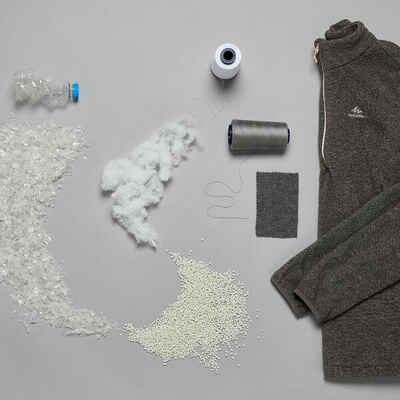How do your boots protect you from outdoor conditions?
Your boots are designed with a membrane to guarantee waterproofing and breathability. A membrane is a very fine component (5 to 25 micrometres) affixed to the inside of a fabric that prevents water from entering while allowing moisture to escape.
Can you be sure that your boots are warm enough for your winter hikes?
Based on the field and lab tests carried out to measure the perception of cold with a panel of users, we gauge the thermal insulation of our boots when stationary (static -11°C) and when moving (dynamic -20°C). As a result, you now have an accurate measure of the temperature at which you are protected with these shoes. The comfort temperature ratings for your shoes is shown. We take into consideration the differences in feeling between men and women.
How can I be sure that my boots are 100% waterproof?
We made sure that your boots are waterproof by conducting laboratory tests to simulate walking with the boots half submerged in snow. We also conducted field tests to measure wear and ageing.
Breathable boots for optimal thermal comfort
Thermal comfort is a balance between the warmth of the boots and its ability to let the foot breathe. Too much heat or not enough breathability means that damp accumulates and cold can set in. We have designed your boots with your activity in mind, be it occasional or regular, with a membrane which prevents water ingress and lets damp out.
Which type of grip and traction does this boot provide?
Equipped with SNOWCONTACT soles, your shoes are designed for maximum grip comfort for hiking and traction on snow. The location and height of the crampons (3 mm) are spaced strategically for optimal grip when hiking on snow. The surface and layout of the studs are designed to perfectly grip the layer of hard snow and evacuate excess water to avoid slipping.
What is the difference between traction and grip?
The traction of the boots depends on the number and shape of the studs. The grip is dependent on the materials of the sole and the tread pattern, like the tyres of your car. Traction optimises propulsion, prevents the boot from slipping backwards when going uphill and stabilises the boot.
Grip prevents the shoe from slipping and skidding on smooth ground or in demanding conditions (rain, snow, ice) by giving the sole grip
Will your boots withstand regular use over the long-term?
Our engineers conduct laboratory tests to ensure that the product fully complies with your satisfaction in use. Our verifications include the following elements: tearing eyelets and straps, gluing, toxicology, UV resistance, abrasion resistance of outsole and upper components, accelerated ageing.
How does the SNOWCONTACT technology used on the boot sole help me?
SNOWCONTACT soles are made with a specific component and stud pattern that is designed to ensure the best possible grip and traction. SNOWCONTACT soles are more effective than traditional soles on snow. When walking on ice, the only way to ensure optimum safety is to add anti-slip grips to your boots.
How to preserve the technical qualities of my boots?
A fabric's water repellent property is its capacity to make water run off its surface without seeping in. As a result, the fabric does not soak up water & stays light, breathable & warm. The water repellent property is achieved by treating the fabric's exterior. This treatment needs to be renewed during the lifetime of the shoe. Products (spray or liquid) for this purpose are available in our stores.
How do I choose the right footwear for snow hiking?
To gear up in the winter, we recommend you follow the following principles :
Warmth: warmth provided by a warm pair of socks (ideally containing a suitable percentage of wool)
Breathability: Choose the sock according to the intensity of the hike and make sure you wear a breathable model to minimise moisture.
Boot height: adapt the height of the sock to the height of the upper and preferably choose high models if you want more protection.
How to dry the inside of your shoe.
Shoes can become heavy while they’re being worn in the wet (condensation and perspiration)
If your boots are very wet, we advise you to remove the insole, fill the upper with balls of newspaper and change them regularly. The paper will pump out moisture and speed up drying.
Never place your shoes too close to a heat source but leave them in a warm, dry and ventilated place.
 Material
Material Process
Process Material
Material